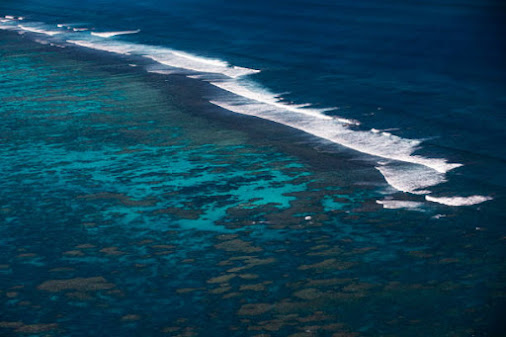Mariana trench
Deep beneath the vast expanse of the Pacific Ocean lies a realm of mystery and wonder—the Mariana Trench. Carved into the Earth's crust, this extraordinary chasm is the deepest known point in our planet's oceans. Spanning over 1,550 miles (2,500 kilometers), the Mariana Trench is a place of unparalleled depth and profound geological significance. Its most famous feature, the Challenger Deep, plunges to a staggering depth of approximately 36,070 feet (10,994 meters), a place where unfathomable pressure and perpetual darkness shape an otherworldly environment.
Mariana trench exploration
Venturing into the Mariana Trench is a daring expedition into the unknown, where few have ever tread. With depths that surpass the height of Mount Everest, the trench presents an incredible challenge to exploration. Descending to such extreme depths requires cutting-edge technology and unwavering determination. Throughout history, intrepid individuals and groundbreaking scientific missions have ventured into this enigmatic abyss, driven by a thirst for knowledge and a desire to unveil the secrets hidden within its depths.
Environment
As humans explore this remote and hostile environment, they discover a world that defies conventional expectations. Life thrives in the Mariana Trench, defying the harsh conditions that seem inhospitable to existence. Extraordinary organisms, adapted to survive extreme pressures, cold temperatures, and the absence of sunlight, inhabit this hidden realm. From bioluminescent creatures that illuminate the darkness with ethereal beauty to microbial communities thriving around hydrothermal vents, the trench is a testament to the resilience and adaptability of life.
Earthquakes
The Mariana Trench's significance extends beyond its fascinating biology. It offers unparalleled insights into the Earth's geological processes and its complex history. The trench provides a window into plate tectonics, where the Pacific Plate subducts beneath the Philippine Sea Plate, giving rise to earthquakes and volcanic activity. By studying the rocks and sediments within the trench, scientists unravel the mysteries of our planet's dynamic evolution, deepening our understanding of Earth's past and present.
In the depths of the Mariana Trench, human exploration continues to push the boundaries of our knowledge, revealing a world that captivates the imagination and expands our understanding of the vast oceans that cover our planet. The Mariana Trench stands as a testament to the remarkable forces shaping our world, reminding us of the unfathomable depths that lie beneath the surface, waiting to be explored and understood.
Maximum depth
The Mariana Trench reaches a maximum depth of approximately 36,070 feet (10,994 meters). This depth is found at a specific location within the trench called the Challenger Deep. It is the deepest known point in the world's oceans and represents a remarkable feat of nature's geological forces. To put its depth into perspective, if Mount Everest, the tallest peak on Earth, were placed into the Mariana Trench, there would still be over a mile of water above it. The Mariana Trench is an awe-inspiring testament to the vastness and diversity of our planet's undersea landscapes.
How Dark is Mariana Trench
The Mariana Trench is located at such extreme depths that it is perpetually shrouded in darkness. Sunlight cannot penetrate the deepest parts of the trench due to its immense depth and the absorption and scattering of light by the surrounding water.
- In the upper layers of the ocean, sunlight can penetrate and provide illumination to support photosynthesis and the growth of marine plants. However, as the depth increases in the Mariana Trench, sunlight diminishes rapidly, and by the time it reaches the Challenger Deep, it is virtually absent.
- While natural sunlight doesn't reach the trench, there are other sources of light present. Bioluminescent organisms inhabit the deep-sea environment, including the Mariana Trench. These organisms possess the ability to produce light through chemical reactions within their bodies. Bioluminescence serves various purposes, such as attracting prey, communication, and camouflage.
- Additionally, during scientific expeditions to the Mariana Trench, submersibles and remotely operated vehicles (ROVs) are equipped with powerful artificial lights. These lights are used to illuminate the surroundings and enable researchers to observe and document the deep-sea organisms and geological features of the trench.
Summary
In summary, while natural sunlight doesn't reach the depths of the Mariana Trench, the presence of bioluminescent organisms and artificial lighting during exploration allows for some illumination in this otherwise dark and mysterious environment.
Life in the Mariana Trench
Life in the Mariana Trench is a testament to the resilience and adaptability of organisms in extreme environments. Despite the immense pressures, frigid temperatures, and perpetual darkness, a surprising array of life forms have been discovered in the trench. Here are some key aspects of life in the Mariana Trench:
1. Microorganisms: Microbes, including bacteria and archaea, thrive in the trench. These microorganisms form the base of the food chain and play crucial roles in the deep-sea ecosystem. They can utilize chemical energy from hydrothermal vents or organic matter that sinks from the surface.
2. Invertebrates: The Mariana Trench is home to a variety of invertebrates, including amphipods, which are small shrimp-like crustaceans. These organisms have adapted to the harsh conditions by developing unique physiological and biochemical mechanisms. They often exhibit gigantism, growing larger than their shallow-water counterparts, which helps them survive in the nutrient-poor environment.
3. Jellyfish: Certain species of jellyfish have been found in the trench. These gelatinous creatures have adaptations that enable them to survive in the deep-sea environment, such as transparent bodies and the ability to capture prey in low-light conditions.
4. Snailfish: The Mariana Trench is inhabited by a type of fish known as snailfish. These fish have adapted to the extreme pressures by having soft bodies and lacking swim bladders, which are gas-filled organs that help fish control their buoyancy. They can be found at various depths in the trench.
5. Deep-sea organisms: Other organisms, including sponges, sea cucumbers, and various types of worms, have been discovered in the Mariana Trench. These organisms have evolved specialized adaptations to survive in the deep-sea environment, such as efficient filter-feeding mechanisms or the ability to break down organic matter efficiently.
It's important to note that our understanding of life in the Mariana Trench is continually expanding as exploration and research efforts continue. With each expedition and technological advancement, new species and insights into the intricacies of deep-sea life are uncovered, enriching our understanding of the remarkable organisms that call the Mariana Trench home.




